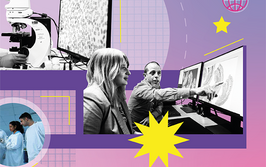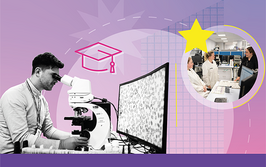Theranos: Science Fact or Science Fiction?
The secretive diagnostic startup has been making headlines – but not always for the right reasons…

There’s been a lot of buzz around the enigmatic health startup Theranos. The company’s disruptive diagnostic technology is designed with the aim of completely changing the way patients access sampling and testing, with plans to create a system whereby one fingerprick can be cheaply used for dozens of tests. And, as we’ve reported previously (1), the company has been cleared by the FDA to market its herpes simplex test in the US, and received a waiver which means the test can be used outside of traditional lab settings. Despite the fact that the company is still to release any details of their testing equipment, or to publish any peer-reviewed data (2), Theranos has garnered a huge amount of attention.
But a scathing article recently published in the Wall Street Journal (WSJ) (3), has levelled several accusations against the company, claiming its revolutionary testing methods are inaccurate, and its success overhyped. A recent FDA inspection of Theranos also made the news when the resulting report contained mentions of the company’s “nanotainer” tube technology being listed incorrectly (4), with the report stating, “You are currently shipping this uncleared medical device in interstate commerce, between California, Arizona, and Pennsylvania.”
An official statement released by the company (5) addressed and refuted all of the claims made by the WSJ – but without producing any data or other details on the accuracy of their testing systems. The statement also criticized the reporter responsible for the story, claiming that, “From his very first interactions with Theranos, the reporter made abundantly clear that he considered Theranos to be a target to be taken down, and not simply the subject of an objective news story.”
Since releasing the statement, the company has announced its intentions to release data comparing its technology to reference testing methods, although when and where this will happen remains unclear (6). CEO Elizabeth Holmes, hailed by some as a diagnostic wunderkind (7), has also hit back at critics, saying “This is what happens when you work to change things. First they think you’re crazy, and then they fight you, and then all of a sudden you change the world” (8).
So is Theranos set to transform diagnostics, or have the tales of its technology been greatly exaggerated? The debate rages on.
- M Sudhanva, “Navigating 21st Century Virology”, The Pathologist, 10, 20–29.
- E Diamandis, “Theranos phenomenon: promises and fallacies”, Clin Chem Lab Med, 53, 989–993 (2015). PMID: 25996487.
- The Wall Street Journal “Hot startup Theranos has struggled with its blood-test technology”, (2015). Available at: on.wsj.com/1ZEOHft. Accessed October 30, 2015.
- FDA, “FDA Form 483”, (2015). Available at: 1.usa.gov/1OVHHas. Accessed October 30, 2015.
- Theranos Press Releases and Statements, “Theranos Facts”, (2015). Available at: bit.ly/1RWUW9r.
- The New York Times, “Theranos chief yields to calls for proof of blood test’s reliability”, (2015). Available at: nyti.ms/1P9NyaG. Accessed November 3, 2015.
- The New Yorker, “Blood, Simpler: one women’s drive to upend medical testing”, (2014). Available at: nyr.kr/1yszZfP. Accessed October 30, 2015.
- CNBC Mad Money, “Theranos CEO Elizabeth Holmes: firing back at doubters”, (2015). Available at: bit.ly/1LGq3Uz. Accessed October 30, 2015.
I have an extensive academic background in the life sciences, having studied forensic biology and human medical genetics in my time at Strathclyde and Glasgow Universities. My research, data presentation and bioinformatics skills plus my ‘wet lab’ experience have been a superb grounding for my role as an Associate Editor at Texere Publishing. The job allows me to utilize my hard-learned academic skills and experience in my current position within an exciting and contemporary publishing company.




















